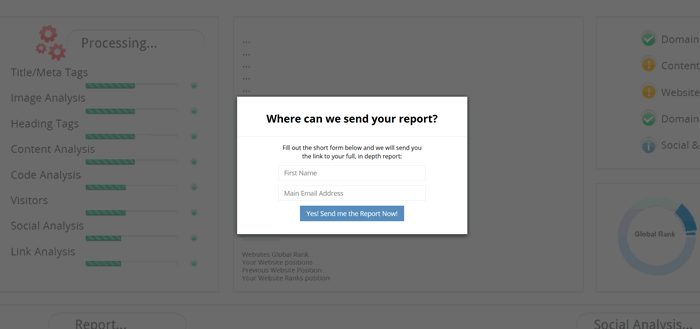Directionless Websites: The Need for a CTA
One thing that most business websites fail miserably in is providing direction to their visitors.
You see it all the time. You land on a website and see a nice limerick over a blurred background. You see a few menu items. And generally you scroll down the page, see some graphics and skim over a couple paragraphs about why you should buy their product/service.
What happens next? Well, analytically you the visitor, leave the website. You close the window or you click the back button and you go on to the next website. If you look at your own website analytics, your visitors are likely doing the exact same thing. Landing on your website and as quickly as they come they leave.
Have you ever thought to ask yourself why or better yet what you could do to keep them from leaving your website without any way to follow up with them?
One of the most overlooked strategies is simply integrating some form of a call to action. Advise your visitors what they should be doing on your website. Get their attention. Challenge them to take action.

There are many different ways to implement a CTA. One of the best is one that guides your visitors to give you their information so that you can continue the conversation with them after they leave your website.
Some of the most common that you’ll see are:
- Buy now/call now
- Free consultation
- Free resource
So, what kind of CTA do you use and when?
Well, much of that depends on the business you’re in and the kind of product or service you are offering. If you make only a small profit off of each sale, having a lengthy lead conversion process won’t do you much good. However, if your product is confusing, never been seen before or costs “a heck of a lot” of money then you probably don’t want to tell people to “Buy Now” as they’ll just leave your website and that’s the last you’ll see of them.
So let’s take a look at some examples and see when they are best fit to be used.
1. Buy Now/Call Now
Buy now could be used for:
- Low-cost items that are not worth a lead nurturing campaign.
- Fad items that are selling right now, think Pokemon, Beanie Babies, etc
- Emergency services that need a quick response: 24-hour plumber, dental emergencies, etc
The key element here is that people who are looking for your products/services are ready to buy right now and delaying the process could hinder the sale instead of help it.
2. Sign up for a free consultation
Free consultations are quite overused, abused and have lost most of their effectiveness.
Not only do most businesses offer free consultations, but think back to a time that you requested one of these “free consultations” and it turned into a sales presentation. Generally businesses take advantage of what they term consultations and push their products/services instead of actually giving advice to the potential client.
So if you genuinely want to offer a free consultation then I would suggest you call it something else so that it stands out a bit and if you just want to showcase your product/service then use the word demo or test drive instead of consultation. Being up-front about what you are going to talk about helps fulfill expectations instead of leaving someone disappointed that what they got wasn’t what they were expecting.
3. Download my free “blank”
A very successful and simple CTA is one that offers to give something of value away for free. This could be a free white paper, eBook, infographic, etc. A free educational resource like this is easy to develop and can be as inexpensive as the time it takes to create the free educational resource.
For example, the free resource that we offer is the QuikGrid SEO mapping report. A visitor lands on our website and one of the first things they see is a strong headline and a CTA that leads the visitor to get a free report on their website’s SEO effectiveness. They willingly give their name and email address in order to receive the report. This provides a tremendous value to the visitor and provides us with a means to continue the conversation to see if we can further help them.
There are many more reasons to have a call to action, but the bottom line is that you need to have one.

